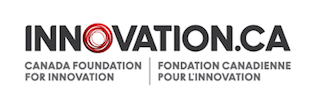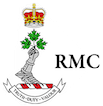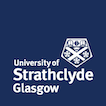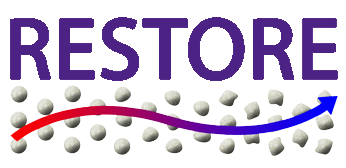Smouldering (STAR) for Energy and Resource Recovery
Background
Each Canadian produces 850 kg of waste annually, of which three-quarters is landfilled. As a result, Canada buries 25 billion kg of waste - equal to filling 70,000 Olympic-sized swimming pools - each year. Much of this is organic waste (textiles, sludge, paper and wood waste, agricultural waste) and the majority is from industry. This practice is not sustainable: it produces greenhouse gases, consumes energy, pollutes the environment, impairs our health, and costs the economy. Furthermore, it buries badly needed resources such as metals and soil nutrients. Of the world’s developed countries, Canada ranks last for effective waste management. A sustainable future requires moving from a “throwaway” society to a “circular” economy, where the residue from one process becomes the raw materials of another. To achieve this we need to discover innovative ways to convert waste into energy and resources. This research is expected to generate an entirely new waste management process, one that could be of tremendous benefit for achieving a sustainable, circular economy. Smouldering has the potential to be a very efficient and cheap process for generating energy from waste, since it generates much more energy than it uses. In addition, it has the ability to make resources (e.g., metals and fertilizer) available for recovery. Moreover, smouldering is expected to destroy pollutants such as PFAS in the waste that makes it hazardous, thereby eliminating the toxicity and enabling its safe reuse.

Dr. Jason Gerhard and PhD Student Taryn Fournie studying recovery of phosphorus from smouldered waste
Program Objectives
This research is expected to generate an entirely new waste management process, one that could be of tremendous benefit for achieving a sustainable, circular economy. Specific project objectives include:
- Discover how to recover energy from smouldering wastes
- Discover how to recover resources from smouldering wastes; and
- Discover how to destroy priority pollutants from smouldering wastes.
Research Methods
Laboratory Investigations
Experiments in the world-leading STAR labs are underway to achieve the program objectives. Experiments are quantifying the energy recovered from smouldered wastes, generating valuable byproducts from smouldered wastes (such as phosphorus, metals and syngas) and destroying priority pollutants such as PFAS.


STAR laboratory investigations into energy and resource recovery from wastes and destruction of emerging pollutants
Click here for more project photos
Numerical modeling
Numerical models are being developed in-house to simulate the complete energy balance in STAR, including the complex heat and mass transfer processes, as well as the relevant reaction chemistry. These are providing novel insights into how to harness STAR as an energy and resource recovery technique as well as maximize destruction of emerging contaminants such as PFAS.


Sophisticated modelling of smouldering reaction progressing upwards in a column cross-section, illustrating the complex interplay of reactions, heat transfer, and air flow.
Program Output
Journal Papers (2014 - 2020)
Torero, J.L., J.I. Gerhard, M.F. Martins, M.A.B. Zanoni, T. Rashwan, J. Brown, 2020. Processes Defining Smouldering Combustion: Integrated Review and Synthesis. Progress in Energy and Combustion Science, 81 (100869): 1-43, DOI: 10.1016/j.pecs.2020.100869.
J.I Gerhard, G. P. Grant, and J.L. Torero, 2020. STAR: A Uniquely Sustainable In Situ and Ex Situ Remediation Process. In Sustainable Remediation of Contaminated Soil and Groundwater: Materials, Processes, and Assessment. Deyi Hou Ed., Elsevier Textbooks. ISBN: 9780128179833.
L. Torero, J. I. Gerhard, L. L. Kinsman, L. Yermán, 2018. Chapter 12: Soil remediation by underground fires. In Underground Coal Gasification and Combustion, M.S. Blinderman and A. Y. Klimenko Editors, Woodhead Publishing Series in Energy, godhead Publishing. ISBN: 978-08-100313-8.
Gerhard, J.I. 2016. Smouldering Remediation. Online Textbook “Remediapedia”. Authored exclusively by invited experts, peer-reviewed and supported by US Government SERDP and ESTCP programs. Available at: http://www.environmentalrestoration.wiki/index.php?title=Smoldering_Remediation
Zanoni, M.A. B., G. Rein, L. Yermán, J.I. Gerhard. 2020. Thermal and Oxidative Decomposition of Bitumen at the Microscale: Kinetic Inverse Modelling. Fuel, 264: 1-11. DOI: 10.1016/j.fuel.2019.116704.
Zanoni, M.A.B., J.L.Torero, and J.I.Gerhard, 2019. Delineating and explaining the limits of self-sustained smouldering combustion, Combustion and Flame, 201: 78-92. DOI: 10.1016/j.combustflame.2018.12.004.
Zanoni, M.A.B., J.L.Torero, and J.I.Gerhard, 2018. Determining the conditions that lead to self-sustained smouldering combustion by means of numerical modelling, Proceedings of The Combustion Institute, DOI: 10.1016/j.proci.2018.07.108
Zanoni, M.A.B., J.L.Torero, and J.I.Gerhard, 2018. The Role of Local Thermal Non-Equilibrium in Modelling Smouldering Combustion of Organic Liquids, Proceedings of The Combustion Institute, DOI: 10.1016/j.proci.2018.05.177
Rashwan, T., JI Gerhard, G. Grant, 2016. Application of self-sustaining smouldering combustion for the destruction of wastewater biosolids. Waste Management, pp. 201-212. doi:10.1016/j.wasman.2016.01.037.
Yerman, L., D. Cormier, I. Fabris, J. Carrascal, J. L. Torero, J. I. Gerhard, Y.L. Cheng, 2016. Potential Bio-oil Production from Smouldering. Waste and Biomass Valorization, 8(2),pp. 1-10. DOI 10.1007/s12649-016-9586-1.
Project Team
Project Leaders:
with
Kela Weber (RMC)
David Major (Savron)
Jose Torero (University College London)
Christine Switzer (University of Strathclyde)
Project Members:
Joshua Brown, Research Engineer
David Patch (PhD at RMC)
Alexandra Duchesne, MESc (Completed 2020)
Marco Zanoni, PDA (Completed 2020)
Melissa Hardy, UG Intern (Completed 2019)
Kia Barrow, UG Thesis (Completed 2019)
Meghan Green, UG Intern (Completed 2019)
Anna Toner, UG Intern (Completed 2019)
Jad Choujaa, UG Thesis (Completed 2020)
Supporting Organizations:









